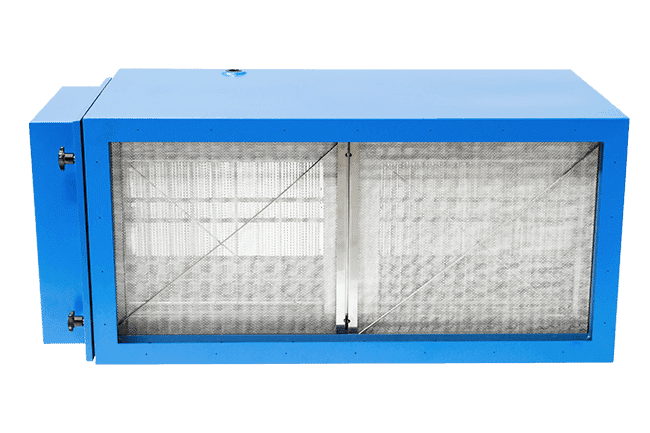
AOS RY7500B WITH UV OZONE
RY7500B – UV ELECTROSTATIC AIR CLEANER WITH UV OZONE QUICK OVERVIEW ISO certified RY7500B electrostatic

RY7500B – UV ELECTROSTATIC AIR CLEANER WITH UV OZONE QUICK OVERVIEW ISO certified RY7500B electrostatic

QUICK OVERVIEW ISO certified RY7500B electrostatic air cleaner rated for 2100 L/s ESP designed to

RY5000B – UV ELECTROSTATIC AIR CLEANER WITH UV OZONE QUICK OVERVIEW ISO certified RY5000B electrostatic

QUICK OVERVIEW ISO certified RY5000B electrostatic air cleaner rated for 1400 L/s ESP designed to

RY2500B – V – UV ELECTROSTATIC AIR CLEANER WITH UV OZONE QUICK OVERVIEW ISO certified

QUICK OVERVIEW ISO certified RY2500B – V electrostatic air cleaner rated for 700 L/s ESP

RY2500B – UV ELECTROSTATIC AIR CLEANER WITH UV OZONE QUICK OVERVIEW ISO certified RY7500B electrostatic

QUICK OVERVIEW ISO certified RY2500B electrostatic air cleaner rated for 700 L/s ESP designed to

RY10000B – UV ELECTROSTATIC AIR CLEANER WITH UV OZONE QUICK OVERVIEW ISO certified RY10000B electrostatic

QUICK OVERVIEW ISO certified RY10000B electrostatic air cleaner rated for 2800 L/s ESP designed to
The AOS ESP unit utilises the principle of electrostatic precipitation. The dirty exhaust air is drawn onto the mesh pre-filter which traps large grease particles. The remaining finer particles some small as 0.01-micron pass into a strong electrical field (ionising section) where the particulate receives an electrical charge. The charged particulate then passes onto a collector plate section made up of a series of parallel plates. Each alternate plate is charged with the same polarity as the particles repel are grounded, which attract and collect.
The number one rule for electrostatic precipitators the higher the velocity the lower the efficiency. The faster the exhaust air travels through the ESP unit, efficiency is greatly compromised. The buyer should consider the physical size of the ESP unit, pre-filters, electrostatic cells.
The UV Ozone lamp is located behind the electrostatic cells. The UV Ozone lamps produce ozone and undergo chemical processes such as photolysis and ozonolysis that breaks down grease and odour containing compounds producing during cooking. The UV ozone component reduces oil and grease build up in kitchen exhaust ductwork and reduces fire risk. When the AOS ESP unit is in operation and the UV ozone is automatically turned on. The 2 in 1 AOS electrostatic precipitator with UV ozone ( B – Model) is available in all RY series units.
AOS Australia & New Zealand works with ventilation and mechanical contractors, this includes air-conditioning companies, architects, consultants, builders, shopfitters, engineers, local councils to develop smoke and odour solutions for kitchen exhaust systems and as well as the HVAC industry.
AOS can provide assistance to help you with local council approval for your filtration requirements.
2/3 m/s is the best airflow velocity and any higher the electrostatic precipitator won’t be efficient enough and efficiency will be greatly compromised.
Yes, the RY series (B – Model) ESP unit can be used for a street level discharge in accordance with AS 1668 and BCA laws pure and clean exhaust air can be expelled on street level without any nuisance. A double pass system is strongly recommended for a street level discharge.
The maintenance varies from business to business. AOS Australia provides maintenance services and schedules to each customer.